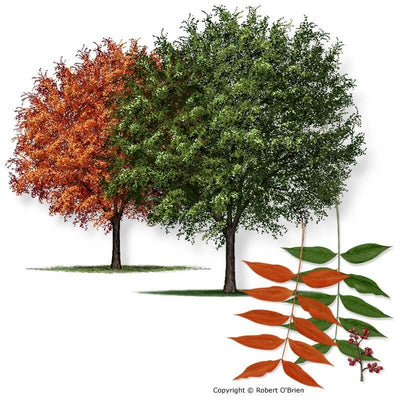Prickly Ash
Prickly Ash
Alternate names: Zanthoxylum americanum P. Mill.Northern prickly ash, toothache tree, Xanthoxylum
Habitat: This species is typically found along riverbanks and within moist ravines, thickets, and wooded areas. It can also thrive in relatively drier environments, such as rocky upland hillsides, bluffs, and open woodlands. Establishment: Common pricklyash is a robust tree or small shrub that thrives in poor soil conditions. While it is easy to cultivate, it is not commonly utilized as an ornamental plant in landscaping. Due to its small, sharp thorns and tendency to produce suckers, it serves effectively as a barrier planting. The species flourishes in conditions ranging from partial shade to full sunlight. Propagation can occur through seeds, suckers, or root cuttings. Seeds can be collected when the capsules are fully open, and unopened capsules will release their seeds upon drying. For successful germination, the seeds require scarification unless they are sown in the fall immediately after collection.
Pests and Potential Problems: Common prickly ash is not significantly affected by insect pests or diseases.
- Medicinal uses: Infusions of the bark were used internally and externally for various conditions like itching, skin inflammation, back pain, fevers, coughs, and pulmonary problems.
- Toothache treatment: The bark and roots were used directly on teeth or smoked to alleviate toothaches.
- Other applications: A poultice made from the inner bark was used to treat rheumatism and sharp pains. The plant was also used to treat worms, colic, and gonorrhea.
- Berry usage: Infusions and sprays made from the berries were used to treat bronchial diseases, sores, and hemorrhages, and to flavor medicines.
- Diuretic and expectorant properties: The bark and berries were used as diuretics and expectorants
- Ref credit
- plants.usda.gov/DocumentLibrary/plantguide/pdf/pg_zaam/li>
- plants.usda.gov/DocumentLibrary/plantguide/pdf/cs_zaam
- myplantin.com/plant/5582
- en.wikipedia.org/wiki/Zanthoxylum_clava-herculis/li>


